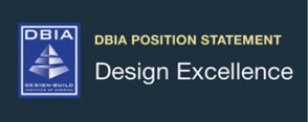
UL Solutions’ new Verified Healthy Building Mark for New Construction empowers industry professionals and their clients to differentiate new construction projects and support the health and wellness of future occupants. The verification service is available for various new construction, redevelopment or tenant improvement projects, including commercial, industrial and multi-family residential buildings.
“People are becoming more aware of how indoor air, water and other factors can affect their health, from potential tenants considering an apartment lease to global companies searching for office space. Demonstrating a commitment to better indoor environmental quality can add value for new and redeveloped buildings, helping to differentiate a project among future occupants and meet rising expectations for better health and wellness in the built environment,” says UL Solutions Healthy Building Group Director of Enterprise Sustainability Joel Ritschel.
As part of the process toward verification, UL Solutions empowers developers to make key choices to optimize indoor environmental health and wellness from the early stages of a project, potentially avoiding more costly and time-consuming changes after completing construction or improvements. Through the UL Verified Healthy Building Mark for New Construction program, customers can achieve one of four UL Verified Healthy Building for New Construction options: Core and Shell, Indoor Air; Indoor Air and Water; and, Residential.
UL Verification Marks are globally recognized, and the verification process incorporates on-site measurements and visual inspections with a science-driven, expert-led approach to indoor environmental quality. With over 40 years of IEQ experience, UL Solutions collaborates proactively to help customer project teams accomplish their goals and achieve the optimal verification option for their built environment. The UL Verified Healthy Building Mark for New Construction was designed to work in tandem with third-party certification programs for sustainable buildings, including the Building Research Establishment Environmental Assessment Methodology (BREEAM), Energy Star, Fitwel, Leadership in Energy and Environmental Design and WELL Building Standard.

DESIGN-BUILD PROJECT SUCCESS YARDSTICK
The Design-Build Institute of America’s updated Design Excellence Position Statement emphasizes collaboration between design and construction professionals through all project delivery stages, from procurement and development through execution. Understanding the design community’s changing needs, the statement introduces five lenses to help provide a framework for evaluating design excellence:
- Integration & Collaborative Process. Emphasizing collaboration and integration across project teams throughout the project lifecycle;
- Healthy Living. Prioritizing user experience by crafting spaces that promote well-being,
- health and safety;
- Community Impact & Delight. Recognizing a project’s connection to and impact on the
- surrounding community;
- Sustainability & Resiliency. Addressing environmental impact and ensuring project
- adaptability to future changes; and,
- Responsibility of Design. Focusing on specific project components, material selection and design constructability.
DBIA emphasizes the synergy of these elements and presents the statement as a practical guide that aids design-build teams in navigating modern project complexities. The group’s Design Excellence Subcommittee—industry experts representing the perspectives of designers, contractors, architects and engineers—drafted the new document.